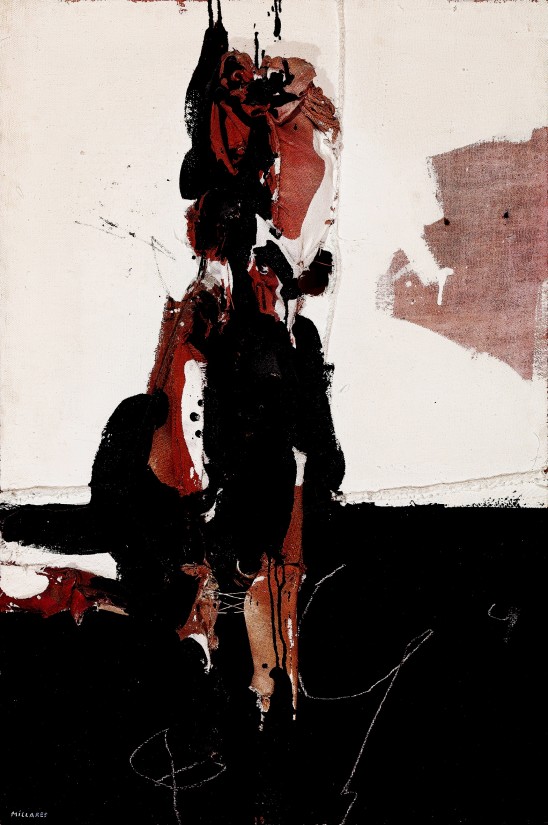Manolo Millares at Frieze Masters
At Frieze Masters 2016, Waddington Custot will celebrate the artist Manolo Millares (1926–1972) with the first solo presentation of his work in London. Millares received international critical acclaim at an early age and is considered one of the greatest figures of 20th century Spanish art. He played a large role in the Informalist movement, the European counterpart to America’s Abstract Expressionism, and was a founding member of the artist group El Paso (1957–1960). El Paso advocated political engagement and formal experimentation, exerting an enormous influence on the propagation of avant-garde ideals in Spain under the repressive Franco regime. Waddington Custot’s presentation spans key decades of the artist’s career from the late 1950s to 1970s, highlighting recurring themes and preoccupations found throughout his work.
Millares was working in an era when European society was still coming to terms with the horrors of the Second World War. His black paintings, such as Ínsula (1967), on display at the Waddington Custot booth, are often interpreted as expressions of existential anguish experienced during this period. Further expression of this sentiment can be found in the physicality with which Millares treated his materials. In works such as Cuadro (10) (1964), burlap, a type of coarse canvas commonly used by the artist, is subjected to violent manipulations; folded in upon itself, with holes burnt through it (often with a blow torch), tied up in knots or doused with black paint, all of which suggest wounding and the processes of creation and destruction simultaneously.
Millares himself cited the work of Goya as an influence, especially his haunting ‘Black Paintings’, as well as Joan Miró, an artist who also made obsessive use of the colour black. The only other two colours used by Millares through his career were red and white. In his later works, the artist also began to mark the pictorial surface with graphic lines, shapes and linguistic signs made with charcoal or chalk, reminiscent of graffiti – the popular form of protest used by the disaffected in society.
A persistent theme was that of the humanoid or homunculus. From 1958 until his final paintings in the early 1970s, Millares produced forty-five different works entitled Homúnculo / Homunculus and several other paintings which reference this concept. A number of these works can be seen at the Waddington Custot booth, such as Homúnculo (1) (1965) and Animal de fondo (1) (1965). In the paintings, the artist has manipulated his materials in such a way as to create a sense of a bodily presence growing out of the pictorial plane. Enrique Juncosa writes that these figures ‘are especially evocative, becoming metaphors for the human condition and its fragility, while also signifying its capability for resistance and survival.’ In the 21st century, as violent and traumatic events remain an ever present reality, Millares' work and mode of expression continues to be as relevant as in his own time.
A catalogue on Millares’ work, with texts by Enrique Juncosa and Alfonso de la Torre, will accompany the presentation.







